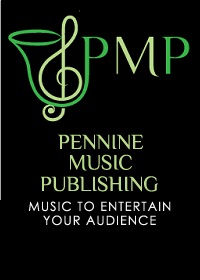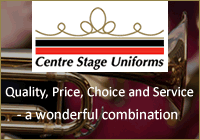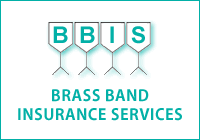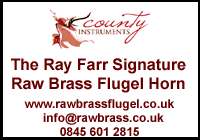2007 Lower Section National Finals - Test Piece reviews
25-Sep-2007This is what the composers have written about their pieces - so you know just what they had in their minds eye when they wrote them.
Victorian Snapshots – On Ratcliff Highway
Comments by Ray Steadman – Allen
This work is a collection of ‘sound pictures’ inspired by the War Cry sketch of Whitechapel Band marching through the notorious Thamesdie thoroughfare in the 1880’s. Now desolate, it was a crowded, dissolute and degraded dockside slum with gin palaces and sailor’s lodging houses. Snatches of old-time songs like ‘Champagne Charlie’, ‘What shall we do with the drunken sailor?’ and ‘Genevieve’ help to evoke the atmosphere of river fogs, steam trains, horse carriages and dockside life; up river there is the sound of the Westminster chimes.
The original themes are bitter, coarse, vivacious and mournful with the emotions of human wreckage. A street fight occurs. Over all broods a recurring, passionate song of divine yearning. The band is represented by ‘Hold the Fort’, which is historically authenticated. Its clash with the roughs is perhaps not history, but Christian Missioners were often beaten up in this road. In the collision of tunes, we are reminded of the courage of the early day warriors and hour their example in the epic song, ‘We’ll be heroes’.
Imperium
Comments by Bruce Fraser
This suite represents the raw power of three of Rome’s great rulers and is inspired by Robert Harris’s book of the same name, which is about Cicero.
Further reading of Conn Iggulden’s ‘Emperor’ series gave a greater insight to the characters of the three men, which I have attempted to depict in these musical portraits. What is particularly interesting, from a musical point of view, is the Roman strategy in battle, where they could split into smaller effective units at a moments notice.
Pompey – was a great general and conqueror who ruled Rome just before Julius Caesar’ rule. As Caesar approached Rome with his conquering army, Pompey fled to Greece and eventually lost to Caesar there. Fleeing to Alexandria, he was executed by the Egyptians, who presented his head to Caesar.
Cicero – was a consul of Rome. He was also a politician and a great orator. He was a complex character, full of devious plots and counter plots.
Julius Ceasar – was a great general and a natural leader of men. He conquered much of Northern Europe, including Britain and returned to evict Pompey from Rome and chase him to Egypt, where he met and married Cleopatra. He eventually returned to rule Rome, where he was assassinated on the famous Ides of March by a group which included his long time friend Brutus.
Roman Triptych
Comments by Leigh Baker
Roman Triptych was composed as a homage to the ‘Sword and Sandal’ epic films (such as Ben Hur and Gladiator) and the orchestral music of composers such as Resphigi who draw inspiration from Ancient Rome and it’s surroundings. I hope bands and audiences will enjoy the melodic nature of the music and the various moods and styles contained within the movements.
Charioteers: The dominant ‘heroic’ feel to this movement includes ‘Fanfares’, music for a Chariot Procession (the marziale) and Action Sequences (from the ‘lively’ section). A couple of fairly technical solos and sections marked ‘nasty’ and ‘misterioso’ all add to the variety of moods and trombones should enjoy their ‘lions and tigers’ impression at I! There are some ‘big’ tunes for horns (L) and back row cornets (M) to get their teeth into and an exciting coda to the movement with plenty to keep everyone busy.
Pilgrims: This contrasting movement presents the ‘Pilgrims’ theme in a variety of harmonic treatments (in 4ths at A, 6ths at C, 5ths at F and block chords) at G. Blance is important in all of these variations. Solos for most principals require quiet dynamics and the muted ‘meditation’ theme at E (also heard at B) presents a different tone colour. Although the movement is slow and sustained, it should never drag and pedal notes help keep momentum to the music.
Colosseum: Percussionists have plenty to do in the work and the opening of this movement is a good example. There is plenty to keep at least two percussionists busy throughout. ‘Colosseum’ is a fairly descriptive movement and depicts a variety of moods an styles, all quite ‘heroic’ in nature once more. The 6/8 ‘chase’ section should be forward looking with snare drum helping to keep the music flowing; stamina being all-important at this stage. As various melodies from earlier appear in new guises, different styles are demanded from the band. The last movement has some sustained periods of louder dynamics, which are needed to present the ‘full’ picture. I hope bands enjoy the contrasts and melodic lines and also relish the technical challenges of the music.
‘Toccata, Elegy & Scherzo’ for Brass Band
Comments by Darrol Barry
The toccata is a powerful movement which opens with a one bar theme of semiquavers heard from the basses, euphoniums and baritones with bass trombone, percussion adding the rhythmic interjections. In bar 3 the cornets and tenor trombones add a two bar syncopated theme which is repeated with the bass theme in thirds. This is developed around the band for eight bars and the opening returns ff. The music moves restlessly and a new theme is heard from the basses and bass trombone answered by soprano cornet, repiano, flugel and solo horn with the solo cornets and tenor trombones on semiquaver duty. After a short repeat the music moves to the key of f minor, a smooth theme is introduced by the basses and taken over by the euphoniums and baritones, however the semiquaver figure is still to be heard from the 2nd and 3rd cornets and percussion. The music grows to a new idea which is interrupted by the return of the original material. The music thunders restlessly to a close.
Elegy, the solo soprano cornet opens the movement with a short phrase which is developed by the cornet soloist, this theme is mainly in 7/4 with the occasional ¾, 4/4, and 5/4 bars marked expressivo. The soloist is supported by the euphonium, baritone and horn. Next comes a poco piu mosso featuring the solo euphonium in further development of the soprano bar. The basses, trombones and flugel provide support. We then come to a poco agitato section featuring triplet semiquavers on muted cornets. The horns take up the familiar phrase and the music crescendos, assisted by tam tam, to the reprise of the cornet theme this time on solo cornets, repiano, flugel, tenor trombones with the basses and euphoniums on a very important melodic bass line, itself based on the cornet theme. After a fortissimo climax the music dies away and the solo flugel takes up part of the euphonium solo, the movement ends quietly.
Scherzo opens in a celebratory mood with a fanfare type idea, the cornets offer a new theme in block harmony with rhythmic support from the band. The bass end has a say with their own theme which leads back to the cornet theme. The central section, same tempo, is based on a four bar chord sequence and spotlights various soloists and sections in turn. The percussion section have a short solo which leads to the return of the cornet and bass themes, the fanfare idea then returns from the start of the movement and a short coda concludes the work.















